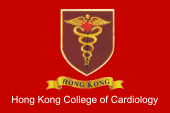Abstract
Percutaneous coronary intervention has become the predominant mode of revascularization worldwide. However, its intermediate- and long-term efficacy is limited by restenosis, despite advances in pharmacological therapy, facilitated angioplasty and device synergy. Vascular radiation brachytherapy (VBT), after undergoing painstaking clinical trials and evaluations, has emerged as a viable treatment option to tackle the vexing problem of restenosis. Brachytherapy programs have been set up in heart centers throughout the world. The explosion of research in cardiovascular radiation medicine is overwhelming. However, vascular brachytherapy itself has brought about new problems, like late thrombosis, edge effects, late stent mal-apposition, etc. From the practical perspective, the issue of radiation safety, availability of on-site Radiation Oncologist and Medical Physicist, especially in the event of anticipated ad hoc procedures, and the cost-effectiveness of brachytherapy (taking into account the use of prolonged antiplatelet therapy) need to be addressed and resolved. Recently, new contenders in the field, drug-eluted stents in particular, have become the focus of both bench and bedside research, directly threatening the niche role of VBT in restenosis prevention. This brief review summarizes some of the basic concepts of VBT, results of clinical trials, local experience with this novel technique and future directions in restenosis prevention.
Recommended Citation
On-Hing Kwok, Wing-Hing Chow, Ashley Chi-Kin Cheng, Current Status of Intracoronary Radiation Brachytherapy Journal of the Hong Kong College of Cardiology 2001;9(4) https://doi.org/10.55503/2790-6744.1175
Creative Commons License

This work is licensed under a Creative Commons Attribution-Noncommercial-No Derivative Works 4.0 License.

